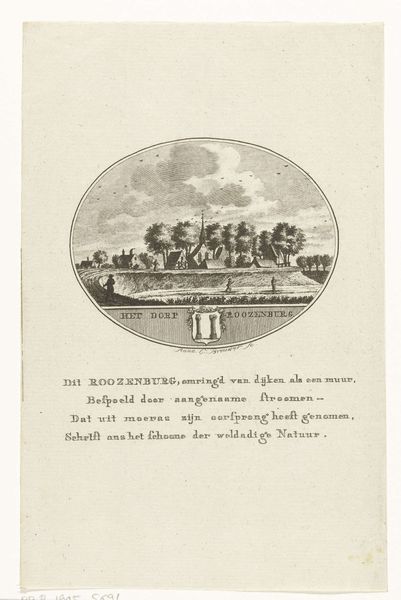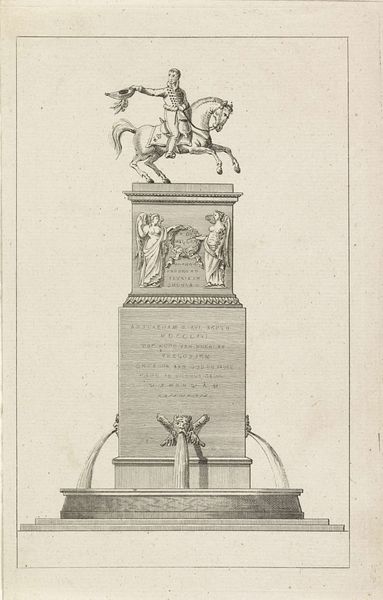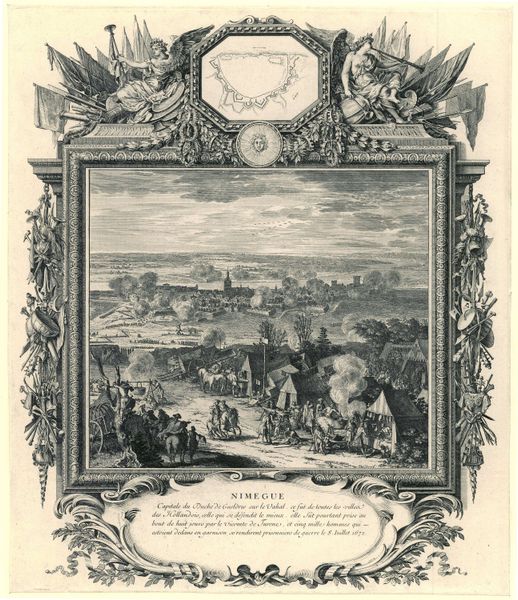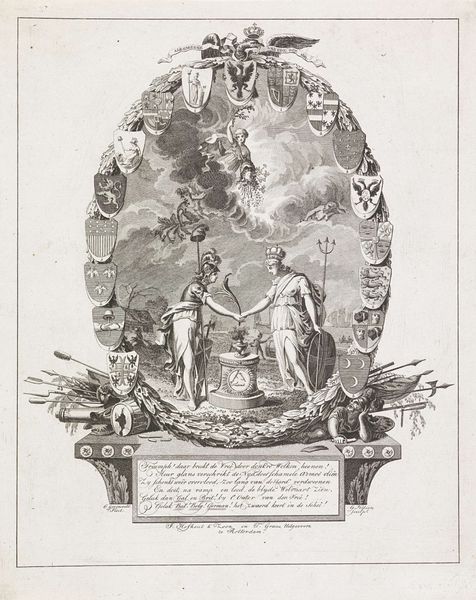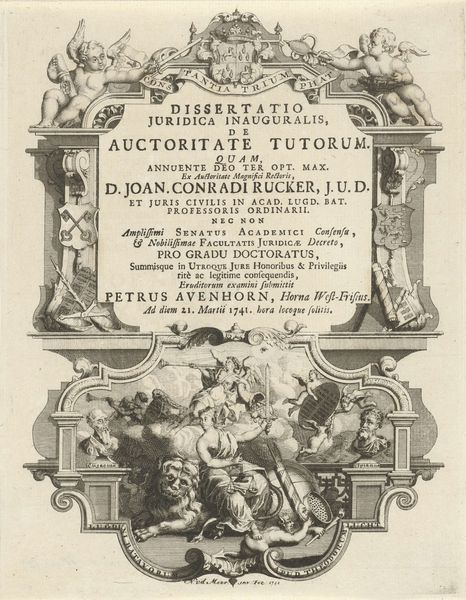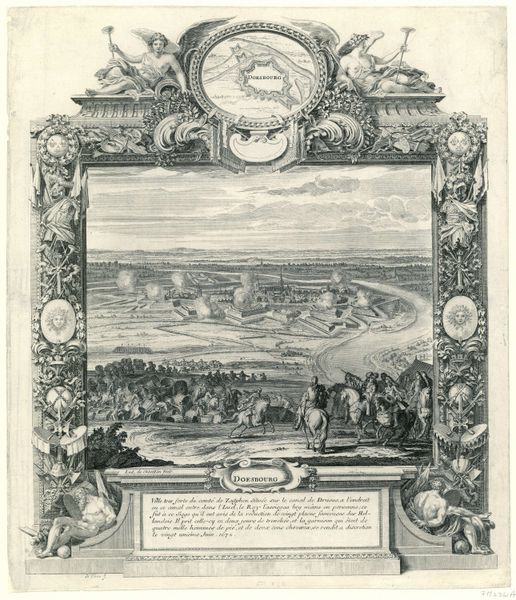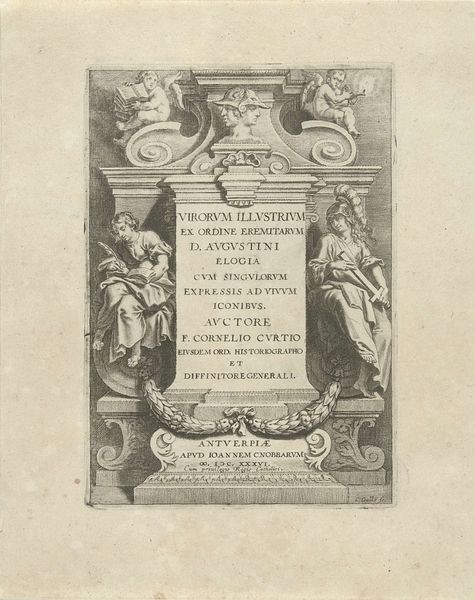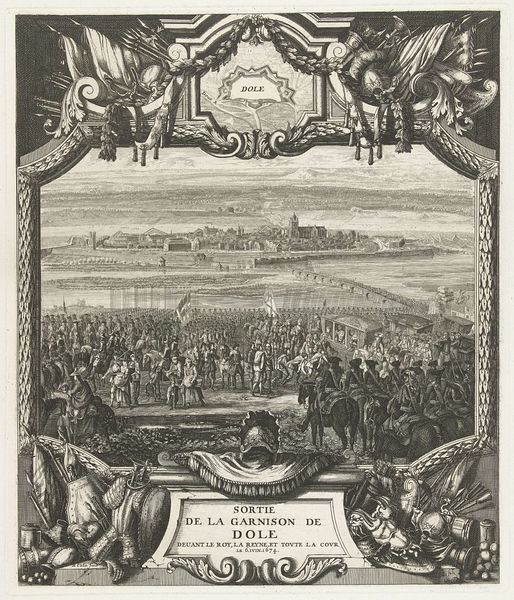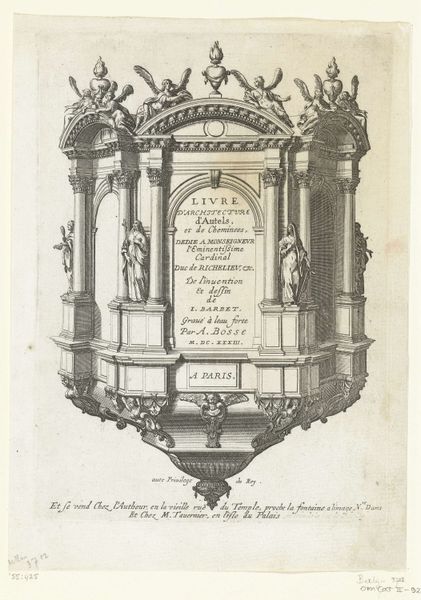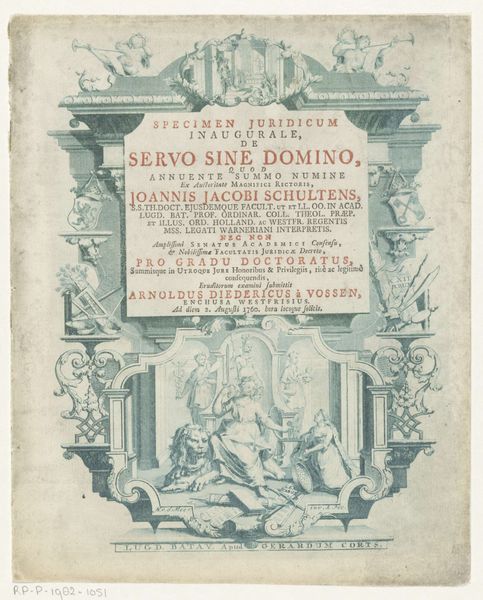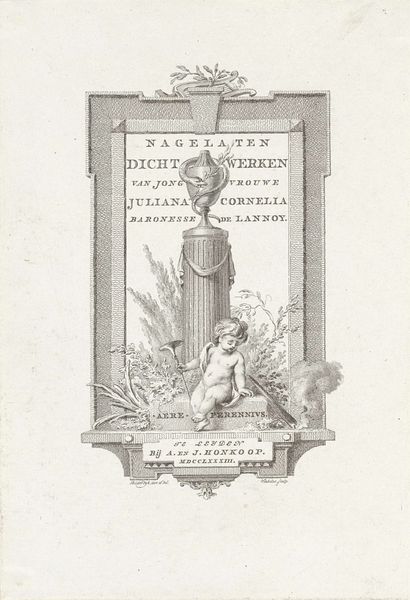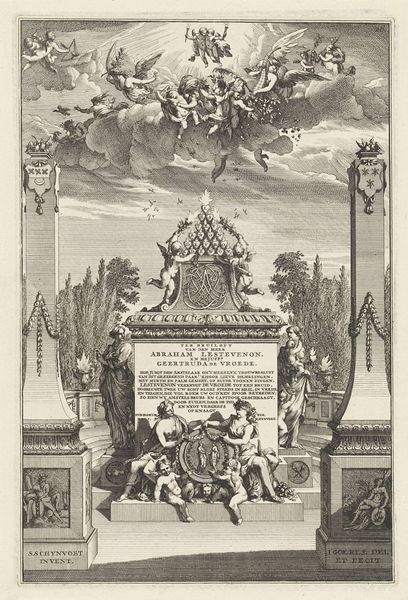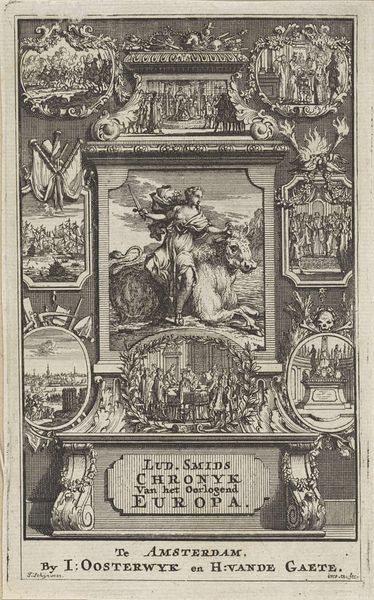
print, etching, engraving
#
dutch-golden-age
# print
#
etching
#
old engraving style
#
landscape
#
line
#
cityscape
#
genre-painting
#
engraving
#
realism
Dimensions: height 213 mm, width 135 mm
Copyright: Rijks Museum: Open Domain
This print, made around 1784 by Johan Christoffel Schultz, uses the technique of etching to create a detailed scene on paper. The process involves coating a metal plate with wax, drawing through the wax to expose the metal, and then immersing the plate in acid. The acid bites into the exposed lines, which are then filled with ink and printed. The fine lines of the etching allow for intricate details, as seen in the depiction of three men by a waterway outside Amsterdam. What is interesting is the directness of the technique: Schultz's hand is very much present in the final print. The social context of this work is tied to the rise of print culture, and the dissemination of images and ideas to a wider audience. Etchings like this one were relatively affordable, making art accessible beyond the elite. In its own way, printmaking democratized the very idea of art. Understanding the labor and skill involved, and how they are embedded in the final image, allows us to appreciate its cultural value more fully, and question the traditional hierarchy between fine art and more accessible forms of visual culture.
Comments
No comments
Be the first to comment and join the conversation on the ultimate creative platform.
